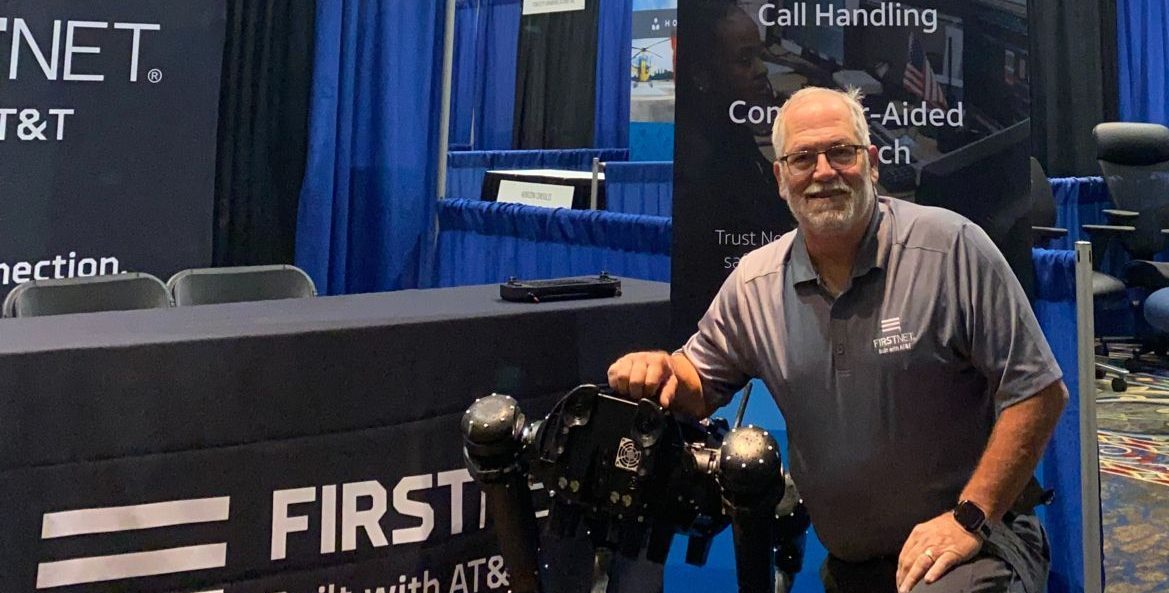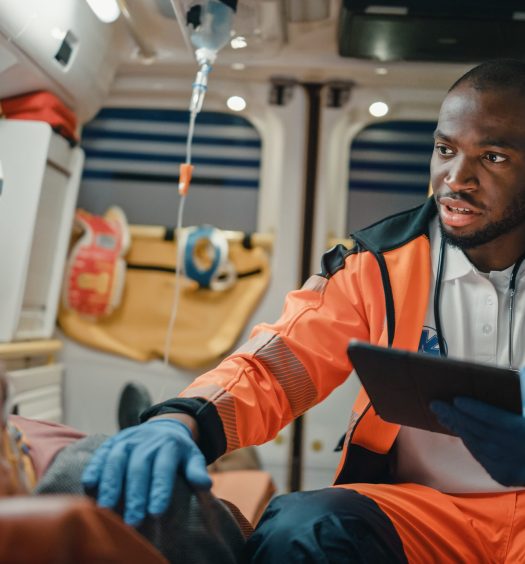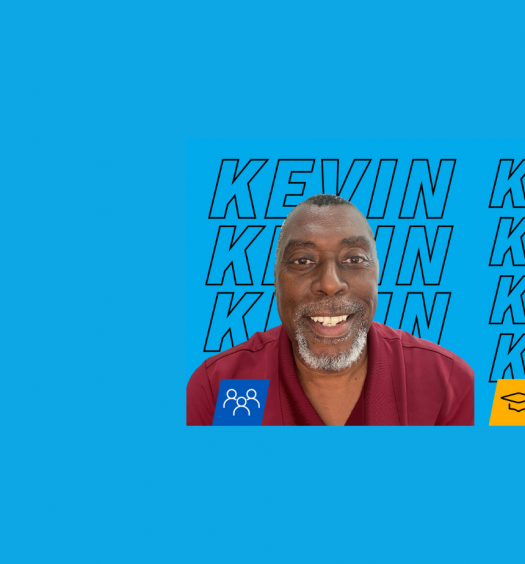Allen Beadel always had an eye for technology or, as he puts it, “I’ve always had an interest in shiny things and blinky lights.” That interest didn’t lead him right into a technology career, however. He began his career in radio and television before pivoting to law enforcement for many years. Then, another pivot opportunity led to him managing his family RV park in Fort Worth, Texas for over a decade before someone “made us an offer we couldn’t refuse” and Allen found himself in early retirement.
“That wasn’t gonna work for me,” Allen told us. “I wasn’t ready to chill.”
Forging a path at AT&T
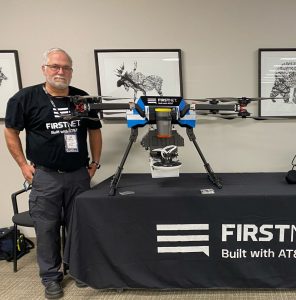
Allen with a Flying COW® drone
A hiring ad for AT&T would lead him down a path that drew on his previous experience and brought him into the technology space. “I was a technician for several years, was promoted into management as a Coach, which evolved into the role of Development Coach. I was working for the North Texas Director of Consumer Field Operations when I was given the opportunity to apply as a volunteer drone pilot for disaster relief.”
His interest in shiny things piqued, he applied and was accepted onto the team. As a volunteer drone pilot, he would be called in when the AT&T Drone Operations Team disaster response teams needed additional support or to take part in educational events. “Our VP at the time was very supportive of what I wanted to do and approved the business unit paying the associated travel costs to train and participate in the volunteer pilot program,” Allen said. “When the opportunity to apply for a full-time Drone Operations role came up, I took it.” His passion had now become his full-time career.
Making an impact

Allen with one of the robotic dogs
The key applications for drones today are site maintenance and disaster response.
“We manage the program that does cell tower flyovers,” Allen told us. “Using software we’ve developed, the drones can automatically identify the components of a cell site by type, number, and manufacturer. They can inspect for corrosion or any misalignments. It’s much safer than having a person climb the tower to do these checks.”
On the disaster response side, large drones called Flying COWs® (Flying Cell on Wings), camera equipped drones, and robotic dogs can be used in various scenarios. Flying COWs® are drones that can be used to transmit data through fiber optics. “Following an event like a hurricane,” Allen told us, “It could take months to get cell towers up and functioning. With the Flying COWs®, we can have a cell site in the air in 1-2 hours after arriving.”
While Flying COWs® can restore service to areas without them, “camera drones” can be used for tasks like damage mapping, search and rescue missions, or getting aerial footage for media usage. The robotic dogs provide a grounds-eye view of things. “We can put thermal cameras or robotic arms on them. The robots can be used to detect chemicals, including Fentanyl, and have other applications too. It’s great for public safety.”
Looking towards the future

Allen presents the robotic dog at a community event
While the uses for drones are abundant already, they’re only going to become more useful in the years to come. One frontier Allen sees being crossed soon is “beyond line of sight” operations. “Right now, you can’t fly beyond what you can see. You need to have unaided sight of your drone,” he said. “We have developed and patented software to get an exception to the line-of-sight rules and fly beyond. That’s kind of the next big leap.”
Allen listed delivery drones and greater disaster recovery abilities – like being able to fly supplies into areas responders can’t reach or see – as what’s around the corner. Even airborne, autonomous taxis could be on the horizon.
The opportunity to develop emerging technologies is what initially drew him to the company all those years ago. “When I hear the word innovation, the first thing I think is AT&T,” he said. “We’ve got a whole litany of things we’ve been on the cutting edge of. Innovation is ‘blink and get left behind.’”
Making connections
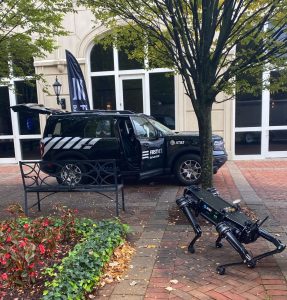 The part of the job Allen enjoys most is getting to connect with his community. One of his favorite memories on the job took him all the way to Australia. “Me and one of my peers took one of the drones and one of the robotic dogs and spent a few days at sea on an Australian naval boat demonstrating the technology and it’s capabilities.”
The part of the job Allen enjoys most is getting to connect with his community. One of his favorite memories on the job took him all the way to Australia. “Me and one of my peers took one of the drones and one of the robotic dogs and spent a few days at sea on an Australian naval boat demonstrating the technology and it’s capabilities.”
He also loves teaching STEM students about the cool career opportunities out there and encouraging them to go after their passion. “One student asked me, ‘what kind of degree do you have to get such a cool job?’ I don’t have a degree. I have passion, a lot of training, and I’ve put in the work. Don’t think the door shuts if you don’t have the opportunity to go to school. You can still be successful in these fields.” This advice also paints a clear picture of why he’s built a career at AT&T over so many years.
“The culture of AT&T encourages innovation; it encourages development. It’s very inclusive and the benefits are amazing. At many other companies, they’d want a degree to do what I’m doing. AT&T helped me develop and pursue what has become a passion. That’s relevant across the company. It’s a great place to be.”
FirstNet, First Responder Network Authority and FirstNet logo are registered trademarks and service marks of FirstNet, an independent authority within the U.S. Department of Commerce.
Explore Technology Careers at AT&T

